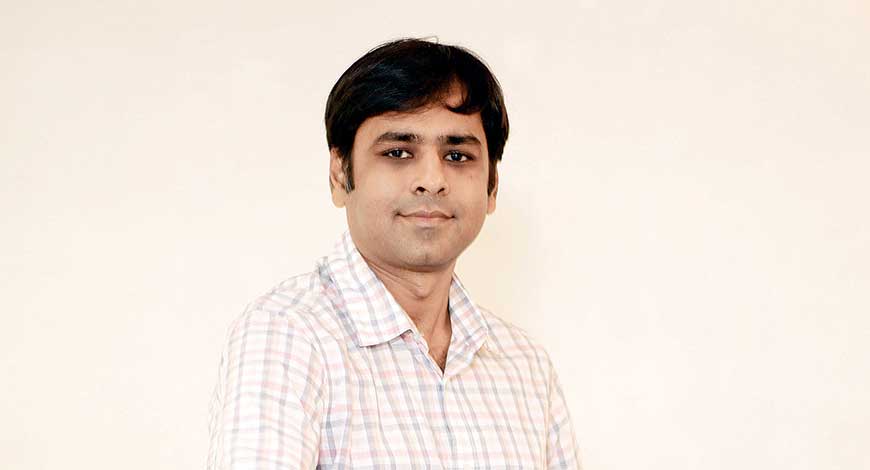- Economy
- Education And Career
- Companies & Markets
- Gadgets & Technology
- After Hours
- Healthcare
- Banking & Finance
- Entrepreneurship
- Energy & Infra
- Case Study
- Video
- More
- Sustainability
- Web Exclusive
- Opinion
- Luxury
- Legal
- Property Review
- Cloud
- Blockchain
- Workplace
- Collaboration
- Developer
- Digital India
- Infrastructure
- Work Life Balance
- Test category by sumit
- Sports
- National
- World
- Entertainment
- Lifestyle
- Science
- Health
- Tech
Master Of The Game
Nazara raised only $3 million in its lifetime, but it built a profitable cash-generating business: Rs 66 crore profit on over Rs 550 crore revenue
Photo Credit : Umesh Goswami

At just seven years of age Nitish Mittersain coded his first game after his father had bought him a ZXSpectrum, which one could connect to the television and code and play games. That triggered a passion not only for coding but also for gaming.
Fast forward to the early 1990s when Nitish joined the Internet Users Club of India, when the now ubiquitous Internet was just starting in India. With stalwarts such as Vijay Mukhi and Shammi Kapoor, who was his mentor for long, Nitish got hooked on to the worldwide web.
All these learnings fell into place when, in the late ‘90s, Nitish started his gaming company, Nazara. “I was so taken up with gaming that I needed to do something in that field,” says Mittersain.
Nitish’s had plans to do an MBA once out of college, but that took a back seat as gaming and technology became his full-time (ad)venture. It was also the time of the dot-com crash. So, early business was hard to come by. Nitish did many projects, but gaming was then much ahead of its time. Those days, Nitish racheted up debt of almost Rs 3 crore. “It was one of the most expensive MBAs,” says Nitish.
To cover his debts, Nitish took on other projects such as messaging and coding and built a cushion for the company. But gaming was his passion. Once again, he started creating games for mobile and telecom companies. He learnt about India’s passion for cricket. In India, also many people could not afford computers and X-boxes, so Nitish focused solely on making games for mobiles.
Mobile games had just begun. One fine day, he had the idea to create a cricket game on Sachin Tendulkar, and wanted to use that name for the game. After not a few mails — and six months of trying — he finally met Tendulkar, who was at his peak those days. I wanted to tie up with Airtel, and we wanted to do business with Airtel.
Nitish made a mock-up of Sachin with all his signature shots and showed it to the little master, who was immediately hooked as he wanted to connect with his audience, young Indian cricket fanatics. “Sachin loved the idea that he could play like himself,” says Nitish, “and we sealed the deal.”
That set Nazara well on its way to becoming one of India’s top Indian gaming companies. The deal got the company the eyeballs and access to telecom companies. Nitish slowly built his company on gaming technology. In 2005, PE firm WestBridge Capital invested Rs 6 crore, which helped Nitish invest in people and technology. “Our early struggles in the dotcom era taught us that business had to be revenue-generating, profitable and we should be able to sleep soundly,” says Nitish. “So, we went about building an asset-light business that would persist for long.”
Nazara raised only $3 million in its lifetime, but it built a profitable cash-generating business: Rs 66 crore profit on over Rs 550 crore revenue. Nazara has created the popular Chhota Bheem games, with CB speed-racing crossing 10 million downloads in Play Store.
In the last 2-3 years, Nazara has started expanding operations in India as well as overseas. It has acquired stakes in other gaming companies and spread its model internationally to over 60 countries. “We started a Friends of Nazara, where we are working with other operators. We have more verticals now, such as e-sports,” says Nitish.
For Nitish, though, none of this would have been achievable had it not been for the high governance standards that it pursued right from its initial days when WestBridge Capital invested in it.
“Early enough we understood the importance of high standards, and we are working with the best when it comes to governance. Also, we ensure that our partners have the highest governance standards in their companies, too. This creates enormous transparency with our investors,” says Nitish.
